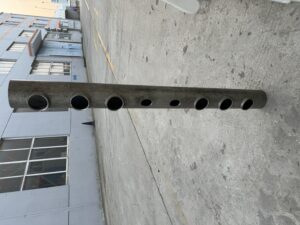What is a CNC Pipe Bender Machine?
CNC pipe bender machine is a computer-controlled device that uses a combination of hydraulic and mechanical systems to bend pipes into precise shapes and angles. The “CNC” in CNC pipe bender machine stands for Computer Numerical Control, which refers to the machine’s ability to be programmed and controlled by a computer.

Key Features of a CNC Pipe Bending Machine
So, what features should you look for in a CNC tube bending machine?
Here are some key considerations:
- Precision and Accuracy: A good CNC tube bender machine should be able to bend pipes with high precision and accuracy, ensuring that the final product meets the required specifications.
- Ease of Use: The machine should be easy to operate, with a user-friendly interface and minimal training required.
- Manufacturing: CNC tube bender machines are used to bend pipes for machinery, equipment, and vehicle manufacturing.
- Engineering: CNC pipe bender machines are used to bend pipes for engineering applications, such as pipe fittings, valves, and pumps.
- Aerospace: CNC tube bending machines are used to bend pipes for aerospace applications, such as aircraft and spacecraft components.
Benefits of Using a CNC Pipe Bender Machine
So, why should you use a CNC pipe bender ? Here are some benefits:
- Improved Efficiency: CNC pipe bender machines can bend pipes quickly and efficiently, reducing production time and increasing productivity.
- Reduced Labor Costs: CNC pipe bender machines can automate the bending process, reducing labor costs and improving safety.
- Increased Flexibility: CNC pipe bender machines can bend pipes of different materials, diameters, and wall thicknesses, making them a versatile tool for various applications.
How to Choose the Best CNC Pipe Bending Machine
With so many CNC pipe bender machines on the market, how do you choose the best one for your specific needs? Here are some factors to consider:
- Pipe Material and Diameter: Consider the type of pipe material and diameter you will be working with, and choose a machine that can handle those specifications.
- Bending Capacity: Consider the bending capacity of the machine, including the maximum bend angle and radius.
- Speed and Efficiency: Consider the speed and efficiency of the machine, including the bending time and production rate.
- Ease of Use: Consider the ease of use of the machine, including the user interface and training required.
- Budget: Consider your budget and choose a machine that meets your needs and fits within your budget.




